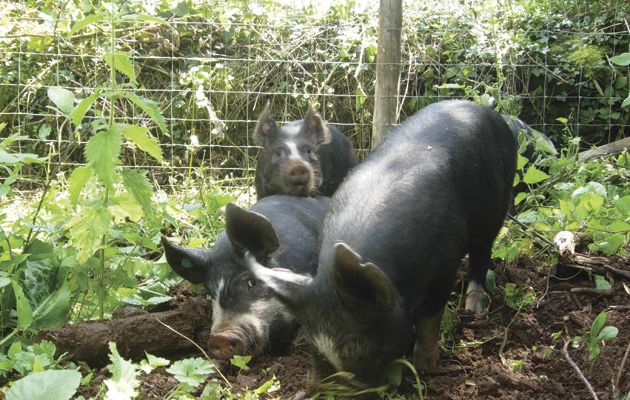Native rare breeds are under serious threat as numbers fall, says the Rare Breeds Survival Trust. Perhaps it is time to lend a hand.
Some rare breeds are becoming rarer, if the recent Rare Breeds Survival Trust watchlist is anything to go by. Britain’s native pig breeds face “significant threats” according to the latest figures compiled by the RBST for its 2015 Watchlist.
One of the best ways to support rare breeds is to farm or eat them. Perhaps as a whole suckling pig, or in a particularly scrumptious scotch egg. However you choose to support Rare Breeds please do just that. Lend them your assistance. Or the future is a bleaker, more homogonised and decidedly less interesting rural life.
RARE BREEDS IN DECLINE
The British Saddleback and Oxford Sandy and Black have been moved from category 5 to 4 and the Berkshire and Tamworth from category 4 to 3 following a fall in registrations. The British Landrace has been recognised as a rare breed for the first time, joining the Watchlist in category 3.
“Pigs this year are our main problem. Every single breed showed a decline in numbers,” said the RBST’s conservation officer, Claire Barber. Soaring feed prices are blamed for decline in the number of people able to keep native breed pigs.
The lack of market for young stock is causing the decline in some equine breeds, especially Dales (on the rarest category 1 list) and Dartmoors (up to category 2 from 3).
Cattle breeds fared better with the Whitebred Shorthorn moving up to category 2, having dipped into the critical category in 2011, which means it had fewer than 150 breeding females. “It takes a lot of dedication for a breed society to get a breed off the critical list. The breed is by no means safe but is going in the right direction,” said Barber.
The news was quite good for sheep with the trend for increasing numbers sustained for the third year in a row. The rarest breed, the Boreary, moved from critical category 1 to endangered category 2.





